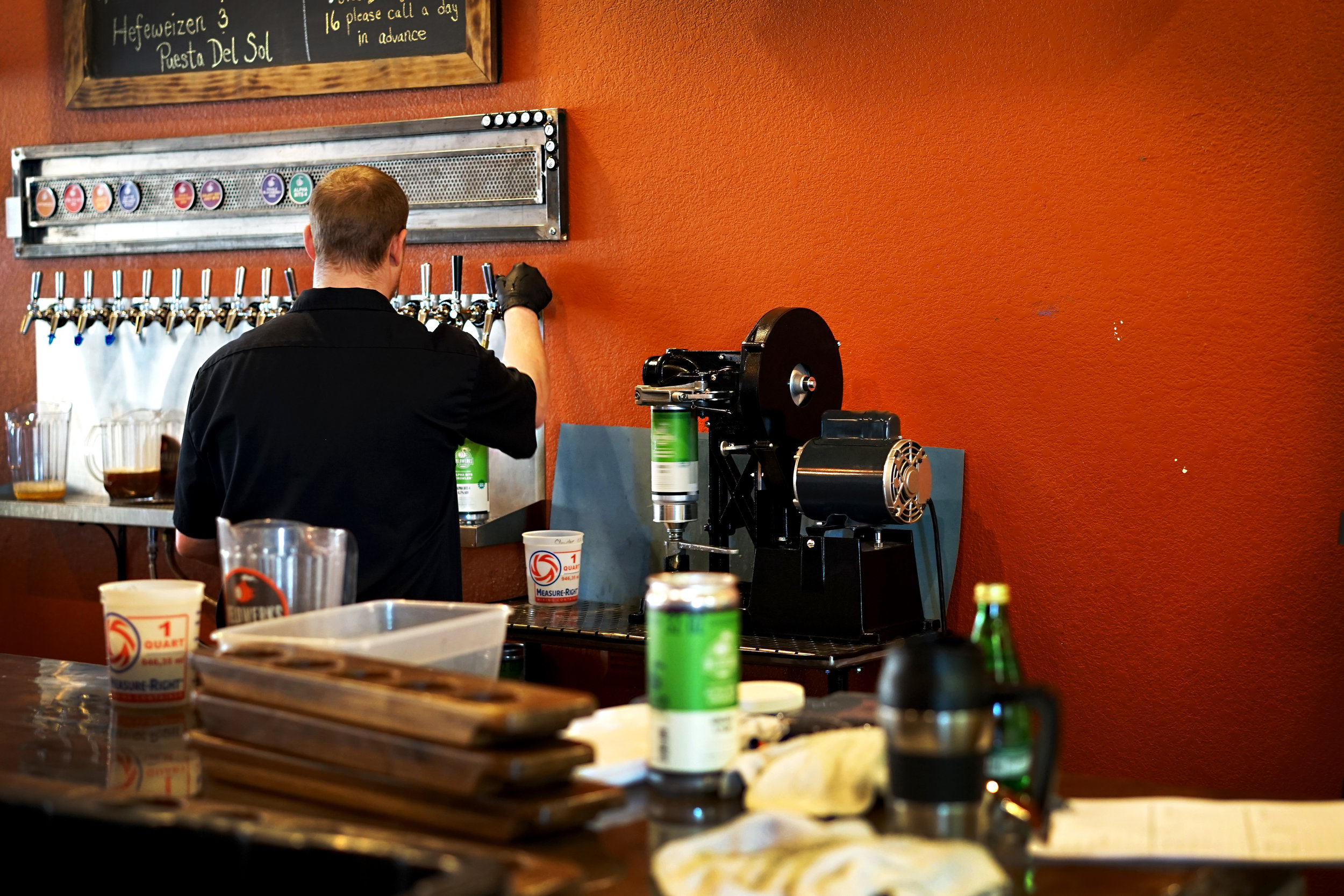Words & Photos - Matthew Curtis
The Crowler is an inventive method of packaging a beer at the point of its dispense – be that brewery, bar or bottle shop – that was introduced by Colorado’s Oskar Blues Brewery in 2012. The term “Crowler” refers to an aluminium container capable of storing 25 or 32 ounces of beer and the term itself is trademarked by the Ball Corporation, which produces the giant cans. The containers are purged with CO2 before being filled from the bottom up and sealed. If done quickly and correctly, the liquid inside will remain in good condition for a month or more, depending on the beer inside.
When Oskar Blues first introduced the container at its Tasty Weasel taproom in Longmont, Colorado, to me it initially felt like a bit of a marketing gimmick. The Colorado brewery has long pushed the idea that it was the first craft brewery to put its beer in cans back in 2002. In this case, pushing its taproom only special releases in these giant, easily stored, transported and shareable cans made sense. Then Oskar Blues started selling the Crowler machine - a hand operated seaming device that lets you seal one can at a time – to its friends, at a mere $3000 dollars a pop.
A few other breweries also bought into the apparent gimmick, Camden Town Brewery began pushing Crowlers at its taproom in November 2014. During Sierra Nevada’s Beer Camp Across America tour in 2014, founder Ken Grossman was so impressed with the device that he bought three. He even audaciously used one machine to package some of Russian River’s Pliny the Elder, putting the hallowed IPA into aluminium for the first time.
Brewers seemed to be a having a lot of fun with the device but at the time I didn’t personally see it catching on and replacing the traditional glass or stainless steel growler. Although gaining some traction in the UK, the traditional growler hasn’t gained the same popularity here as it has in the US, with smaller bottles and cans still being preferred by most consumers. There was no way I could envisage the Crowler becoming a mainstream form of beer packaging, here or anywhere else, until now…
When in the US last month there was an increasingly familiar device sitting on the rear bar shelf at many of the breweries I visited - in fact in Colorado every single brewery I went to had one. It was quickly apparent that the time of the Crowler had finally arrived. What was interesting is that unlike when I’d seen them behind a bar previously and the machine often sat idle this time they were in almost constant use. Loveland Aleworks, a small brewery in the Colorado town of the same name, was filling them constantly during the 45 minutes I sat at the bar and enjoyed a flight.
There are several advantages for small breweries using a crowler machine. For starters it allows them to do small packaging runs of their beers that they wouldn’t ordinarily be able to produce. $3000 might seem like a big investment for a machine that seals one can at a time but that figure is insignificant when you consider that a decent quality canning machine will cost more than 100 times that. The containers themselves are significantly lighter and cheaper per unit than traditional glass growlers too and although Ball demands a not insignificant minimum order of 60,000 units, the plain cans are able to be used for any beer simply by applying the appropriate label to each individual can.
Crowlers are great for the consumer too, not only are they completely recyclable but they are also a darn sight lighter than a glass growler once full, while also being less prone to breakage. This opens up a world of new possibilities for beer traders. For a small brewery like Greeley, Colorado’s Weldwerks Brewing Co this allows them to tentatively penetrate markets in States they simply aren’t ready to distribute to – and they let their customers do the groundwork for them.
On a recent visit, Weldwerks' co-founder Colin Jones told me that they are currently selling, on average, around 1200 Crowlers a week - and even more when a special is released. I sat in the Weldwerks taproom and watched as customers filled their cars with whole cases of the 32oz cans. I even put a few in my own suitcase and was delighted when I realised that they weighed almost half of what a 750ml glass bottle does.
There’s also a more simple reason why Crowlers work and that’s because you don’t need to worry about remembering to clean and carry a glass growler with you when you visit your local brewery or bottle shop. The only real drawback was that, unlike with a traditional growler, the Crowler cannot be resealed. Step in Oskar Blues and Ball once more, who have revealed a new, re-sealable Crowler, developed in collaboration with Dayton Systems Group. Thanks to it being re-sealable this newly designed Crowler is legal in all 50 States.
It appears that, despite my initial misgivings, the time of the Crowler is now and I concede that this micro-packaging technology is no longer a gimmick. Having already seen its rapid success on the other side of the Atlantic I’ve no doubt that European breweries will soon be standing in line to purchase Crowler machines of their own and consumers will be eagerly awaiting the chance to trade and share beers that they might not have been able to beforehand.

